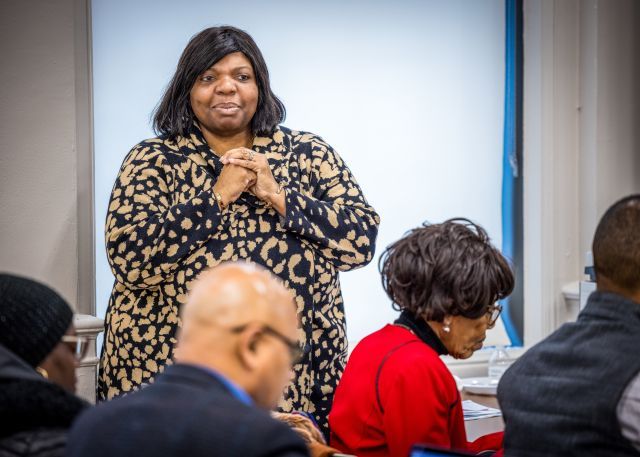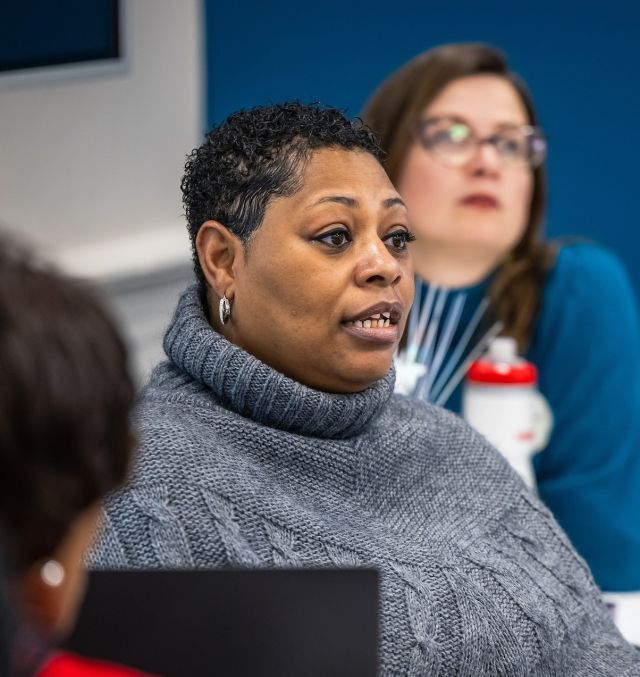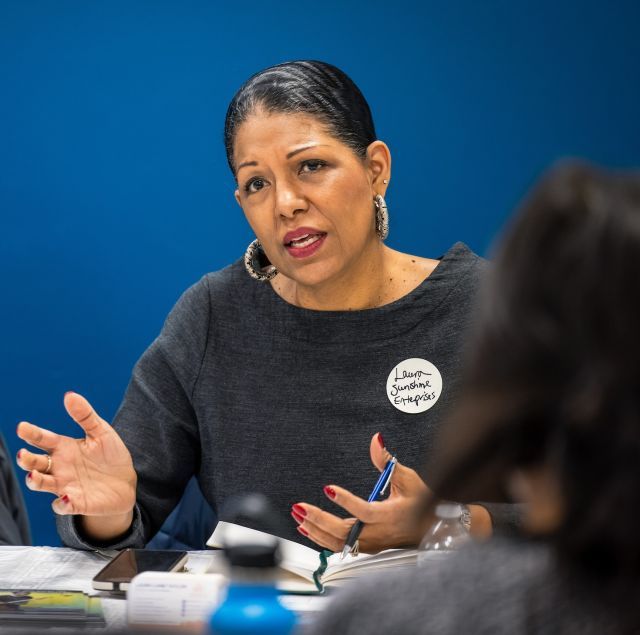Launching and operating a small business is no small feat, and for Black small business owners the road is often more arduous due to historic and systemic inequities and barriers. One recent study reported by Forbes found that nearly half of Black small business owners had to tap into their personal savings to keep their business alive.
Angela Hurlock, CEO of Claretian Associates, located in South Chicago, believes three interconnected pillars are key to creating an ecosystem that positions Black-owned small businesses for success: access, capital, and education. Notably, access holds particular significance in ensuring an equitable playing field and the ability to tap into the benefits of the other two pillars. Without access and absent a network of support, nobody benefits, said Hurlock: “We all need to work together.”

South Chicago is one of nine majority-Black communities participating in Fifth Third Bank’s Empowering Black Futures neighborhood program created to accelerate revitalization in nine key communities across seven states. In collaboration with Enterprise’s Advisors team, the program provides technical assistance to support each community with developing a vision and strategy to advance economic mobility and support the program’s five goals: create more equitable systems, improve upward mobility among residents, build an inclusive civic infrastructure, promote prosperous small businesses, and develop healthy built environments.
Fifth Third recently announced that it had invested $187 million across the nine neighborhoods, exceeding its original $180 million commitment. Fifth Third also extended the program’s technical assistance to the neighborhoods through 2025 to ensure continued, sustained impact and progress.
Each of the nine neighborhoods is led by a “backbone” organization that works with a range of partners. Claretian Associates is the backbone in South Chicago, where partners are working to create a thriving business corridor. At a recent daylong event, Claretian Associates brought together over 30 small business owners and related technical-assistance and capital providers. They shared ideas, resources, and expertise to ensure services and financial products meet actual needs and motivate others to invest in South Chicago.
“You need more than vision to survive entrepreneurship,” said Doreetha Wheatly, a boutique owner who founded the South Chicago Hub, a co-working and event space for artists and entrepreneurs. “You need partnership and collaboration.”

For Fifth Third, bringing the right partners and resources together is paramount.
“We knew we couldn’t do this work by ourselves,” said Rob McGhee, Fifth Third Bank senior vice president and community impact territory manager for the Chicago region, explaining that partnership is integral to the Empowering Black Futures program. “We wanted our investment and thought process to be catalytic in nature, so we brought on partners to help us take this model to communities across the country.”
Over the course of the day’s presentations and discussions, five themes emerged that can serve as a guide for communities working to create healthy small business corridors.
1. Build trust and community among business owners.
Centering business owners’ voices and demonstrating a shared commitment to economic mobility are key to building trust. Efforts to support and grow small businesses must focus on what small businesses say they need to thrive – not what partner organizations think is best for them.

As a small business owner herself, Monique Thurman, Claretian Associates’ Empowering Black Futures program coordinator, is well positioned to support South Chicago small business owners. The first step for her is building trust and a sense of community, starting with in-person meetings like this one.
“I love spaces where we get together physically,” said Jessica Smith, owner of Indigo Café. “You can’t replicate these physical meetups online. I feel encouraged and look forward to keeping the momentum going.”
2. Ensure businesses have the resources to operate successfully.
Programs must tie back to small businesses’ actual needs and opportunities. During the day, business owners shared a range of specific needs, such as back-office support, data sources, and access to flexible forms of capital. They also discussed the importance of aligning technical assistance with business owners’ specific growth stages to steer them toward the right resources.

“Many owners have growing pains,” said Laura Lane of Sunshine Enterprises, which provides training and other resources to Chicago’s rising entrepreneurs. Lane noted the importance of coaching small businesses for sustainable, upward growth. “We need to meet them where they are,” she said.
"I want to run a business as opposed to work a business,” said Wheatly, the boutique owner. “Taking all of the information that I’ve learned and the people that I’ve met in the community, I’m looking forward to more collaborations, applying knowledge, and taking advantage of the different opportunities that were offered here today so that I can arm myself with the knowledge to be a successful business owner.”
3. Create alignment across partners.
Make sure the right partners are in the room and that their efforts are coordinated. And don’t overlook the value of in-person gatherings.
Claretian has been purposeful in cultivating a robust small business ecosystem in South Chicago with diverse partners, ensuring their alignment and collaborative efforts toward shared goals. Partners contribute a wide array of services to support business owners, spanning credit building, individual technical assistance, group workshops, and microloans, as well as traditional loan products.
“All of us talked about the necessity of collaboration, capacity building, and education on the journey towards equitable growth and opportunity. I feel inspired,” said David Feinberg of the Chicago Community Loan Fund.
4. Identify a strong backbone organization.
A hub-and-spoke model, with a lead organization like Claretian Associates embedded in the neighborhood and acting as a central, coordinating force, helps drive a small business development strategy forward. Also essential is a dedicated staff person. Philanthropic support from Fifth Third and a Section 4 grant from Enterprise allowed Claretian Associates to hire Thurman, who is responsible for coordinating the Empowering Black Futures program and partners in South Chicago.
5. Integrate small business development into a broader holistic strategy.

What’s notable about South Chicago’s small business strategy is the link to a broader place-based approach, aiming to transform the neighborhood into a community of choice.
That means efforts to promote Black-owned businesses and advance workforce development align with ongoing efforts by Claretian and partners to prevent displacement by developing affordable homes for rent and ownership and revitalizing open spaces and community facilities to create healthy recreational opportunities.
The synergy is tangible, said Derric Clemons of South Worx Arte Group. "Claretian and other organizations that have been in the game for so long – they get it, and things are becoming more impactful, and resources are coming in this direction. It’s about validating the people within the village,” he said.
